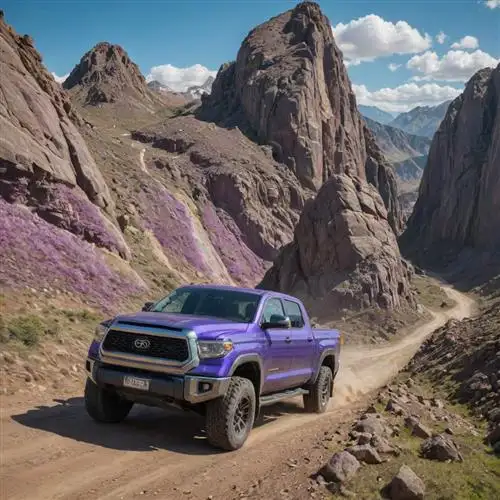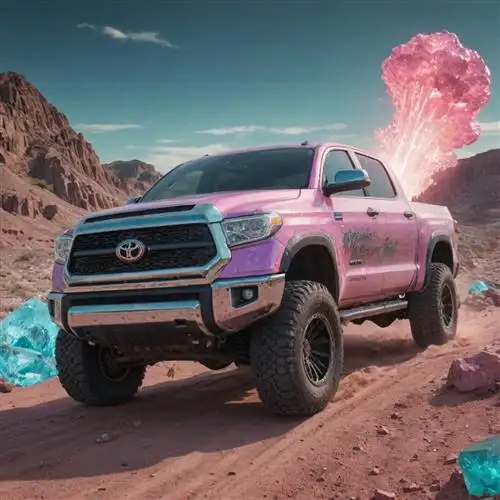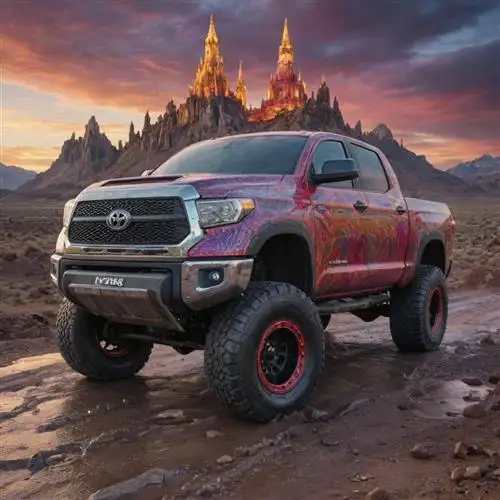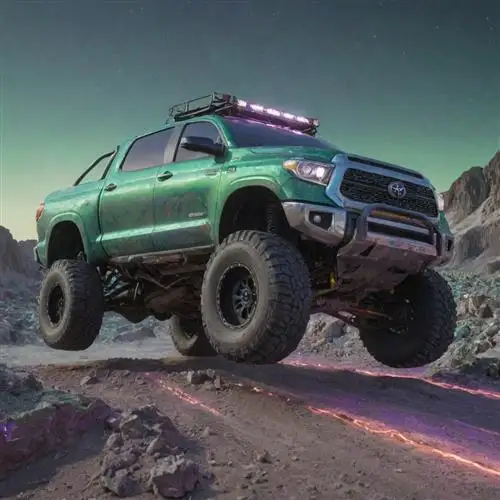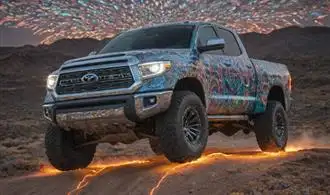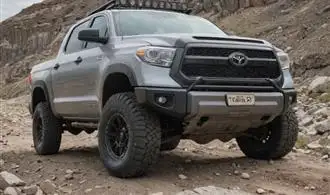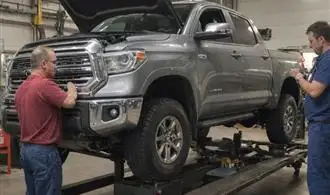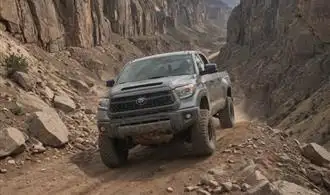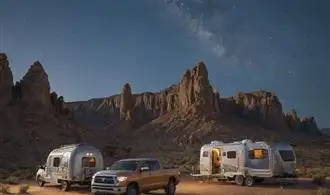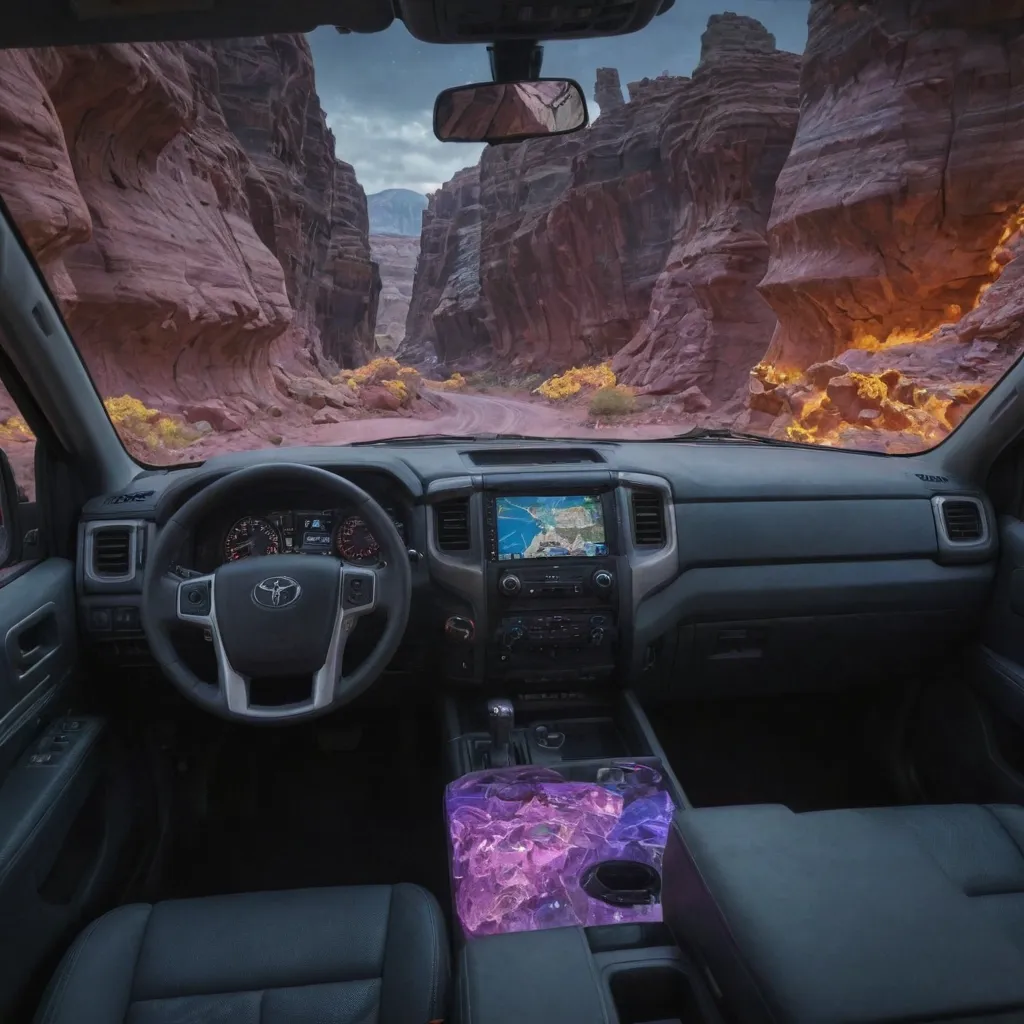
Underestimating Terrain Challenges
When taking your Toyota Tundra off-road, it's crucial to understand the importance of terrain challenges. Many inexperienced off-road enthusiasts make the mistake of underestimating the difficulty of the terrain they'll encounter. This can lead to a range of problems, from getting stuck to damaging your vehicle.
One common terrain challenge is uneven ground. Off-road trails often feature rocks, ruts, and other irregularities that can catch your vehicle's undercarriage or wheels, causing it to become unstable or even tip over. It's essential to carefully navigate these obstacles, adjusting your speed and line of approach as needed to maintain control.
Steep inclines and declines pose another significant challenge. The Tundra's impressive size and power can make it easy to tackle steep hills, but if you're not careful, you can quickly find yourself in a precarious situation. Gradual, controlled ascents and descents are crucial to avoid losing traction or stability.
Soft, sandy, or muddy terrain can also be particularly tricky. Your Tundra's weight and power can cause it to sink or become bogged down in these conditions, making it challenging to extract yourself. Maintaining momentum, adjusting your tire pressure, and using proper techniques like momentum and rocking can help you navigate these treacherous surfaces.
Additionally, water crossings present their own set of challenges. Depth, current, and obstacles beneath the surface can all pose risks to your Tundra. It's essential to thoroughly assess the crossing before attempting it, and to take appropriate precautions to protect your vehicle's critical components.
Neglecting Suspension Upgrades
One of the most critical mistakes off-road enthusiasts can make with their Toyota Tundra is neglecting to upgrade the suspension system. The Tundra's factory suspension is designed for on-road performance, but when tackling rugged terrain, it simply may not be up to the task. Failing to address this can lead to a host of problems, from a jarring, uncomfortable ride to potential damage to the vehicle's components.
When taking the Tundra off-road, the suspension system must be able to handle the increased stress and demands. This includes the ability to absorb the impact of uneven surfaces, maintain control in challenging situations, and provide the necessary ground clearance to navigate obstacles. Upgrading the suspension with high-quality aftermarket components can make a significant difference in the Tundra's off-road capabilities and overall driving experience.
- Shock absorbers and struts: Investing in heavy-duty, off-road-specific shock absorbers and struts can dramatically improve the Tundra's ability to handle the rigors of off-road driving. Look for units that offer increased travel, improved damping, and the durability to withstand the demands of the trail.
- Coil springs or leaf springs: Depending on the Tundra's configuration, upgrading the coil springs or leaf springs can provide additional lift and the necessary ground clearance for tackling obstacles. This can be especially important for models equipped with larger tires or other off-road modifications.
- Suspension control arms: Reinforcing or replacing the Tundra's suspension control arms can help maintain proper wheel alignment and stability, even in the face of the increased stresses encountered off-road.
- Sway bars: Upgrading the Tundra's sway bars can improve handling and stability, particularly when navigating tight turns or traversing uneven terrain.
It's important to note that suspension upgrades should be carefully selected and installed by a qualified professional to ensure compatibility, proper fitment, and safe operation. Attempting to tackle these modifications without the necessary expertise can lead to further complications and potential safety concerns.
Underestimating Tire Requirements
When taking your Toyota Tundra off-road, one of the most common mistakes to avoid is underestimating the importance of proper tires. The tires on your Tundra are the only point of contact between your vehicle and the terrain, and they play a critical role in your off-road performance and safety. Failing to select the right tires for the conditions can lead to a range of problems, from reduced traction and handling to potential damage to your vehicle.
- Terrain Type: Different off-road environments, such as rocky trails, muddy terrain, or sandy dunes, require different tire designs and features. Research the specific conditions you'll be encountering and choose tires that are well-suited for those conditions.
- Tire Size: Larger tires can provide increased ground clearance, improved traction, and better obstacle-clearing ability, but they can also affect your vehicle's handling and fuel efficiency. Consult your owner's manual or work with a tire specialist to determine the optimal tire size for your Tundra and your intended use.
- Tire Tread: Off-road tires typically feature more aggressive, deep-grooved tread patterns that can bite into soft or uneven terrain. Look for tires with a tread design that is specifically engineered for off-road use, as they will provide better grip and stability on challenging surfaces.
- Tire Sidewall Strength: When driving off-road, your tires are more susceptible to punctures, cuts, and other damage. Opt for tires with reinforced sidewalls, which can help prevent sidewall failures and provide additional protection against obstacles.
- Tire Pressure: Adjusting your tire pressure can have a significant impact on your off-road performance. Lower tire pressures can improve traction and flotation on soft surfaces, but be sure to return to the recommended pressure for on-road driving to maintain handling and fuel efficiency.
Ignoring Recovery Gear Essentials
When taking your Toyota Tundra off-road, one of the biggest mistakes you can make is neglecting to pack the proper recovery gear. These essential items can mean the difference between getting unstuck and being stranded in a remote location. Experienced off-road enthusiasts know that having the right equipment on hand can save time, money, and even your vehicle.
At the bare minimum, your Tundra should be equipped with a high-quality tow strap or recovery rope, a heavy-duty shackle, and a solid recovery point. The tow strap or rope should be rated for the weight of your vehicle, and the shackle should be made of durable, corrosion-resistant material. Ensure that your recovery points are properly installed and able to withstand the stress of a pull.
Beyond the basic recovery essentials, consider investing in a winch. Whether mounted on the front or rear of your Tundra, a winch can be a game-changer when you find yourself in a sticky situation. Look for a model that is rated for the weight of your vehicle and can handle the terrain you'll be tackling.
Traction aids, such as traction boards or sand ladders, can also be invaluable when your Tundra is stuck in mud, sand, or snow. These lightweight, portable tools can provide the extra grip needed to get your vehicle back on solid ground.
Don't forget to pack essential tools and supplies as well. A heavy-duty jack, wheel chocks, and a shovel can all come in handy when you need to free your Tundra from an obstacle. Additionally, keep a set of gloves, a first-aid kit, and a flashlight or headlamp in your recovery gear kit.
Disregarding Navigation and Communication
When venturing off-road with your Toyota Tundra, one of the most crucial mistakes to avoid is disregarding navigation and communication. Proper planning and preparation are essential to ensure a safe and enjoyable experience. Neglecting these aspects can lead to getting lost, encountering unexpected obstacles, or being unable to call for assistance in case of an emergency.
Navigational awareness is key when exploring remote or unfamiliar off-road terrain. Before embarking on your journey, thoroughly research the area, study maps, and familiarize yourself with the terrain and potential hazards. Invest in a reliable GPS device or smartphone application that can provide turn-by-turn navigation, as well as the ability to track your location and mark waypoints. Ensure your device is fully charged and consider bringing a portable power bank as a backup.
Communication is equally vital when venturing off-road. Ensure your Toyota Tundra is equipped with a reliable two-way radio or satellite communication device, such as a personal locator beacon (PLB) or satellite phone. These tools can be invaluable in the event of an emergency, allowing you to call for help or signal your location to rescue teams. Additionally, inform friends or family of your planned route and expected return time, and agree on a check-in schedule to ensure your safety.

